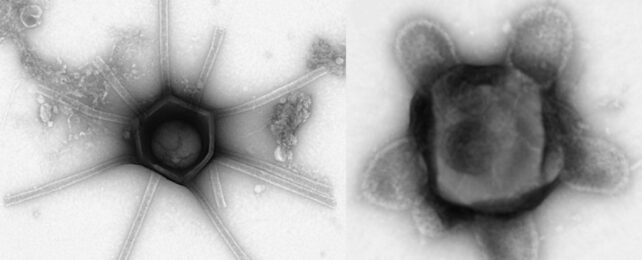Scientists have discovered an "astounding diversity" of giant viruses taking on "previously unimaginable" shapes and forms in just a few handfuls of forest soil.
These giant viruses have alien-looking appendages and internal structures that have never been seen before.
The soil sample was collected in 2019 from Harvard Forest, a short drive from Boston in the US.
It was flown to the Max Planck Institute in Germany, where it was examined using transmission electron microscopy, a process that magnifies objects using a beam of electrons.
This revealed that the soil was packed with giant viruses up to 635 nanometers in width.
These giants are smaller than the largest virus ever discovered (which is 1,500 nm wide) but much larger than the viruses that humans usually encounter (COVID-19, for instance, is 50–140 nm).
The researchers could be "quite confident" that they were looking at viruses (rather than structures discarded from cells) because the shells, called capsids, have distinctive shapes, including the unmistakable icosahedral shape of a 20-sided polygon.
"Transmission electron microscopy … revealed an astounding diversity of virus-like particles," write the researchers.
"Amazingly, we found that a few hundred grams of forest soil contained a greater diversity… than… all hitherto isolated giant viruses combined."
One of these exotic giant viruses had large limbs arranged in a symmetrical pattern, which the researchers described as a 'turtle' morphology.
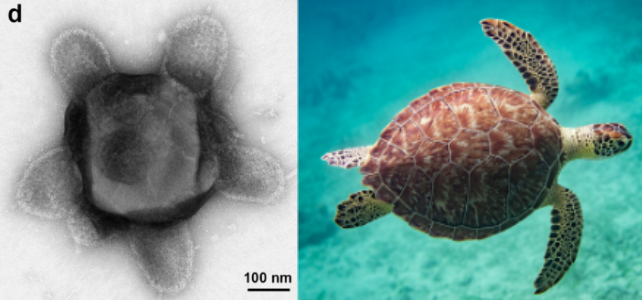
Another virus has long tubes emerging on all sides, calling to mind the ancient Greek mythology figure of Medusa. Fittingly, the scientists named this structure 'Gorgon', the creature that Medusa and her two sisters were called.
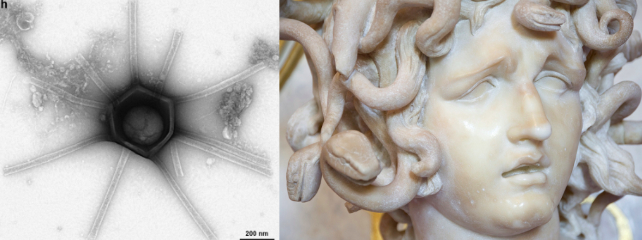
Another category called 'haircut' describes a family of large viruses with messy heads of different-length fibers (which looked like a troll doll).
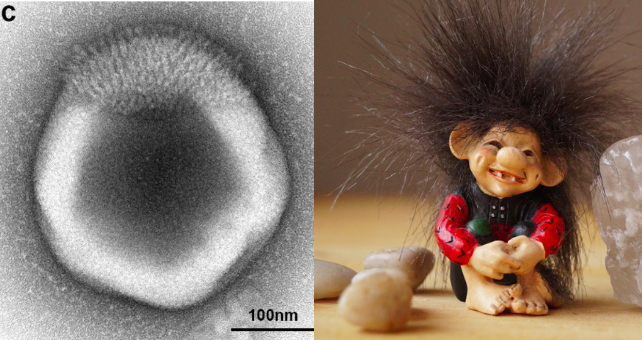
The 'supernova'-shaped giant viruses had a thick tangle of fibers close to the capsid shell and a thick layer of regularly arranged tendrils further out.
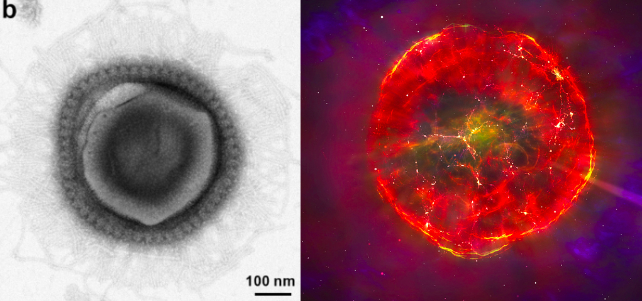
The 'Christmas star' viruses had a double-layered shell resembling two interlocking triangles, and the 'falcon' viruses had a beak-like structure.
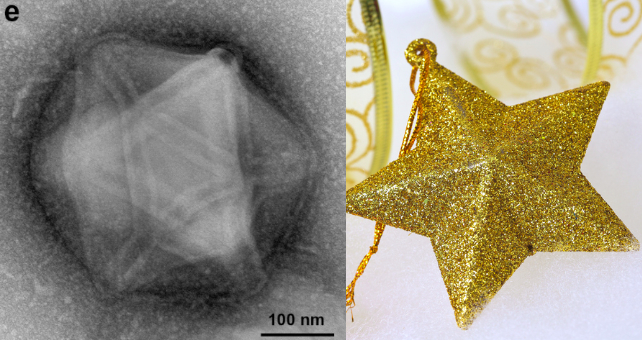
"This fascinating window into the complex world of soil viruses leaves little doubt that the high genetic diversity of giant viruses is matched by diverse and previously unimaginable particle structures, whose origins and functions remain to be studied," write microbiologist Matthias Fischer, electron microscopist Ulrike Mersdorf, and biologist Jeffrey Blanchard.
Giant viruses that parasitize algae have been studied for decades. But the field really took off in 2003 when the first giant (400-nm-wide) virus growing in amoebae was found in a cooling tower in England. It was named 'mimivirus' as it mimicked the appearance of bacteria.
A world record was set in 2010 with the discovery of the whopping 700-nm-wide Megavirus chilensis off the coast of Chile.
In 2013, a 1,000-nm pandoravirus was found in a pond in Melbourne. It was named after the mythical Pandora's Box.
The current record-holder is the 1,500-nm-wide Pithovirus sibericum, a giant virus buried in the Siberian permafrost for 30,000 years but discovered when the ice thawed in 2014.
This paper is available as a pre-print through bioRxiv.
